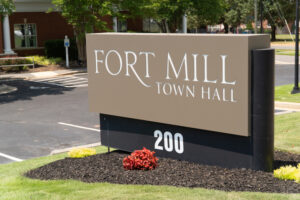Fort Mill School District Moves Forward with School Openings Amid Safety Concerns
Fort Mill, SC – The Fort Mill School District’s board of education has decided to proceed with the opening of Flint Hill Elementary School and Flint Hill Middle School despite ongoing community concerns regarding safety linked to the nearby Silfab Solar manufacturing site. The board voted on election night to set attendance boundaries for the upcoming schools, which are set to open next year and in 2026, respectively.
Who is Affected?
The decision impacts the children and families in the Fort Mill community, particularly those zoned to attend the new Flint Hill schools. Parents have expressed their concerns about the potential dangers posed by Silfab, which is located adjacent to the new school sites. The decision was made with a majority vote of 6-1 by board members, including board chairwoman Kristy Spears and fellow member Wayne Bouldin, who emphasized the need for additional school capacity amid rising enrollment.
What Are the Concerns?
Many parents and community members have raised alarms about chemical safety and the possible adverse effects these chemicals could have on their children’s health. Some parents, like Carl Young, a local chemist, have highlighted the risks of industrial accidents and have pleaded for the board to reconsider until the Silfab situation is resolved. They argue that higher complexities arise from having such manufacturing operations nearby.
When Will the Schools Open?
Flint Hill Elementary School is scheduled to open in the fall of 2024, while Flint Hill Middle School is set to follow in 2026. These timelines are crucial, given the district’s rapid student growth, which the board recognizes and is attempting to address through the expansion of facilities.
Where Are the Schools Located?
The new schools will be situated on Logistics Lane in Fort Mill, close to the Silfab Solar plant. This proximity has fueled the community’s anxiety, as they fear that chemicals stored and possibly released by the factory could pose a risk to the health and well-being of students and staff.
Why the Decision to Proceed?
Board members have stated that delaying the openings would not alleviate safety concerns and would further exacerbate the district’s already over-capacity schools. Bouldin emphasized the urgent need for capacity, saying, “We’ve got to open these schools.” Additionally, the district’s administration has received numerous reports assuring them that environmental regulations by local, state, and federal agencies will be upheld by Silfab.
Despite repeated calls for the board to step back until safety issues are clarified—calls that culminated in hundreds of emails leading up to the board’s vote—members have expressed confidence in the safety measures already in place. Board member Lipi Pratt stated that while she understands parental fears, she believes the district is doing its utmost to ensure a safe environment for all students.
With the district experiencing an influx of new students that has put existing schools under pressure, the decision not to delay the opening of Flint Hill schools aligns with their strategic plan to meet educational needs in a growing community.
The future concerning Silfab remains uncertain, as litigation involving the company continues. Nonetheless, board members echoed the sentiment that they need to trust established protocols when it comes to safety evaluations.
As the district navigates this complex situation, it acknowledges the diversity of opinions and concerns from parents and actively engages the community in dialogue about their plans moving forward.








